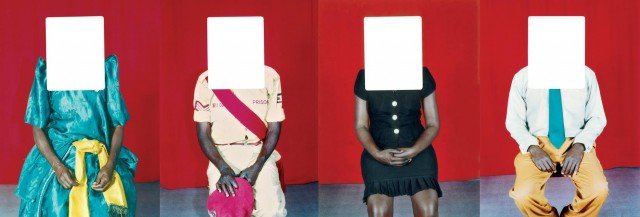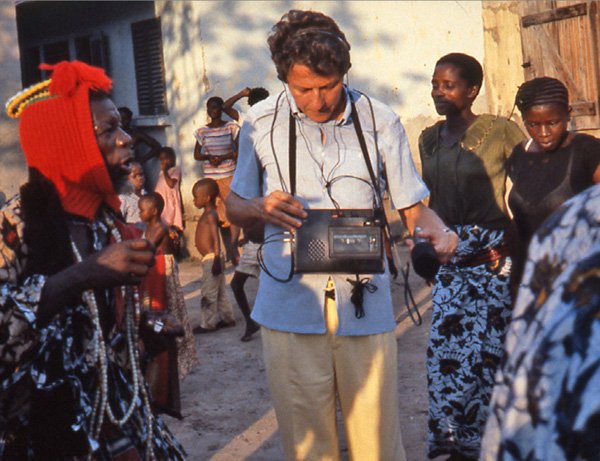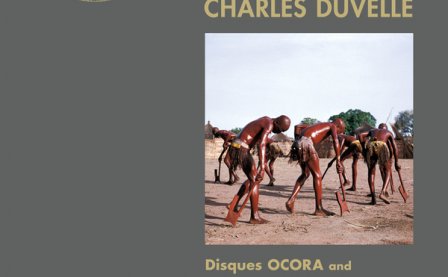“Seeing comes before words.”

We bend our backs, watch shadows in earth for signs of us unspoken. It’s John Berger’s Ways of Seeing, but it might be gospel, gut stuff to trust. Our eyes will situate before our brains think to babble; the rush from womb to world is a wash of the very first slides our eyes make of an us we can be. We begin our lives as perceivers and watchers. We begin to recognize the tenable-unknowable thing that we suspect seeing grants us: a knowledge, an existence. We convert that to memory, an extension of seeing. Existence of an us in this world is tied to seeing first, sometimes most. Words will come. Seeing orients us.
Ourselves are our images. Seeing frames worlds in worlds. More Berger: “We never look at just one thing; we are always looking at the relation between things and ourselves.”

And then in a later In the Break, Fred Moten begs, bent between senses: “what is the sound that precedes the image?” Or: what went down in the blackness of your mother’s belly? Where’s timbre for an amniotic slush? Bresson says: “the ear goes more toward the within, the eye toward the outer.” We never look at just one sound; we are always looking at the relation between sounds and ourselves.
The Photographs of Charles Duvelle attempts to bind up and free, in pages you can feel and sound files singing on spinning circles, what unleashing the senses feels like. Duvelle, alternatively written as a “free electron of ethnomusicology” and “a westerner with a microphone,” wrote extensively of what a universal/international ethnomusicology might look/sound like. “Desire for systemization drives it [ethnomusicology] to seek a ready explanation for everything, to tread without the necessary respect,” he writes. Somehow, seeing, to Duvelle and to our ears, sounds like de-systemization. It looks like a solar system of moments upon moments.
Berger ties sees to modes and moments. What we make of the world (when we see it) is tied to how we see, in paintings, photographs, film. In the world in a given historical moment. It’s intuitive. Seeing looks different to the mother witnessing (for the first time) her child witness the first time, to Renaissance painters rendering worlds and faces we already forgot, in Dziga Vertov’s whirling sympathy for how a machine eye might see (“I free myself for today and forever from human immobility. I’m in constant movement.”) Ways of seeing change with our history.
Charles Duvelle, eye and ear of constant movement, was born to a colonial governor father living in French Indochina. Duvelle saw beyond his history to change how to see; his photographs and field recordings constituted the first stab at a Westerner’s engagement with cooperation over colonizing. He developed and directed Discues OCORA, from the Timucuan word for “place of gathering.”
In the sounds of The Photographs of Charles Duvelle, we witness peoples in places of gathering. And we begin to realize, in context of cooperation, the ear and the eye are also such places for gathering.
Seeing ekes in intention (Berger: “every time we look at a photograph, we are aware, however slightly, of the photographer selecting the sight from an infinity of other possible sights”), watching the world and then (re-)rendering it. We see the images of our world in a new way each time we see them. Time passes in a changing world. Eyes circle. Just as Doppler predicted, the changing world’s whine sounds different to our perceived stillness. In this way, seeing is similar to how eyes intake date, as our ocular sense is our lens for the world, a filter. On one side, an us, something imagined, something vital. Opposed is a not unseen reality, a way things are. Something concrete. Something treacherous.
“Every time we look at a photograph, we are aware, however slightly, of the photographer selecting the sight from an infinity of other possible sights.” Seeing as shaping is selecting and veer toward a dialect of aggression, into constricting past enslaving. We capture moments. We take pictures. Images don’t capture sights; seeing captures us. In wonder or in captivity, Derek Walcott writes words for refusing systems, for aggressing oppressive images, and the poem becomes its own lyric deterrent to unseen voices. “Here’s history’s opposite, its origin.”
What distinguishes the captured image from a colonized one?

Photographs aren’t records. Paintings aren’t renderings. Peter Doig’s brain and brush’s thin band of warm human orange in a squid-ink black of the first colonial infant doesn’t look like the district of Moruga, the location on Trinidad, on Earth, a place under human eyes.

We bring to our medias the ways we are thinking; the shades of our now world boomerang back to trace these half-familiar images. It’s not quite history’s opposite, but it’s not an un-ghost. Columbus may have landed on Moruga before he spread his rot, before he saw and urged the capture of what he perceived. History doesn’t impact the image of a stone Columbus still conjuring colonies. An image of Columbus still brought slaughter, incensed collapse, invited Armageddons. What are we doing looking at it?
Walcott, like Doig, like The Photographs of Charles Duvelle, attunes a resisting self to the colonized image. In the war for attention, seeing and hearing must work in tension to work together. The Photographs of Charles Duvelle is a tricky title for a textu(r)al document. Is it a book of photographs with an accompanying soundtrack or an album proper with pictures?
What does a sound look like?

What does an image sound like?

Godard proposed, again and again, that “in order to see one image, you need two.” The men bend their backs in ritual humanity, surrounded by a world; the men bend backs in the space between edges and frames, surrounded by a book. Moruga is the insemination site, shores for colonial sea wasps to wash up on and touch all their stinging tentacles to; Moruga is the sun and the sky as vacation, a place for commemoration. Black faces are obscured by masks and resist our conscripted narratives; black faces are boxed up and cut out by the governing powers in the name of ID photos, the site of whiteout, denial, restriction. In two images, a relation. In relation, worlds. “We see these paintings as nobody saw them before,” Berger reminds us. “If we discover why this is so, we shall also discover something about ourselves and the situation in which we are living.”
In Listening to Images, Tina M. Campt liberates Berger’s image re-seeing and Duvelle’s living knowledge musicology model and emerges with something like resistance, pictures at a revolution. The subjects of her listen-seeing (“a description and a method”) are all the black faces in system-requested identification photos, as if photos proved existence, as if existing is renderable in light and ink. Benjamin laughs out of the past at these attempts to script lives into boxed: “shouldn’t a photographer who cannot read his own pictures be no less accounted an illiterate?”
Those faceless portraits of un-eyed bodies against the stark red were retrieved from a photography studio in Uganda, where, to produce ID photos, it was cheaper for photographers to take full-body shots and cut out the face. How do we see these black bodies? Our eyes intuitively begin to assign meanings, like they did emerging from the womb but Campt reminds us that only by recalibrating (which our eyes do naturally and memories do subconsciously) is their room for a new way of seeing. “In these photos, I hear black refusal—the embodiment of practices of defiance, resilience, and dignity in situations where it seems black people may not have access to these things.” Assertion of self is not in eye-contact alone, but in the relating, the placement of an ear to an Earth, a re-perspective. To discover in seeing the Berger-thing about ourselves/world, we need to cross senses, to engage the incongruous and live in “the endlessly generative space of the counterintuitive.” An image is quiet but not silent. An image listens to us watching.

Each new historical moment intuitively impacts — counterintuitively — how we see a past. Frequency of image (and also of pitch) determines perception. Duvelle’s gift was cooperative humility, explosive excitement for letting the instruments of the past (photographic lenses, light particles, analog storage devices) listen and see the people of a moment, the seeing of a future. It looks like Saturn’s rings, but it sounds a lot like the grooves of the Golden Record, Sagan’s plot to echo in a cosmos.

Can listening to seeing plot a course for a future? Duvelle’s recordings are out there in the re-momenting eternities of the Voyager’s future mission, always moving ahead and back. Counterintuition, refusal to relegation, places our personal perspectives farthest away from the seeing and listening. Listening to images explains, in a new way, the known to us. It’s the quiet and the quotidian, the hum of Walcott’s “Music of the Future,”
“first a few stars and then a constellation
first the breaker’s slow clapping and then, the ovation”
More about: Charles Duvelle, Hisham Mayet


